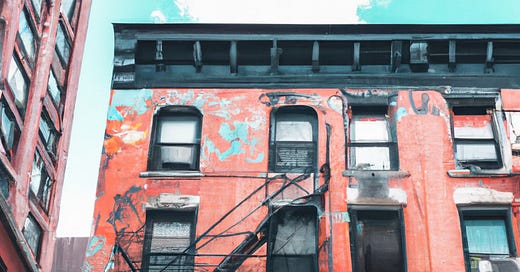The Problem With Bitcoin Gentrification
What does the arrival of big Wall Street money mean for the future of Bitcoin?
There is no doubt that the arrival of the new spot Bitcoin ETFs is a big moment in the history of Bitcoin. The new Bitcoin ETFs are essentially a green light for both retail and institutional investors to start loading up on Bitcoin. The process of buying Bitcoin is now so easy that even your 80-year-old grandmother can do it.
So why do I have a queasy feeling in my stomach right now? Maybe it has something to do with something that I’m calling “Bitcoin gentrification.” Remember — the early Bitcoin pioneers were typically libertarian, anarcho-capitalist, and anti-statist. They did not trust sovereign governments, central banks, or Wall Street investment firms. And now, almost exactly 15 years after Bitcoin first launched, we’re letting sovereign governments, central banks, and big Wall Street institutions have a large say in the future of Bitcoin?
What does gentrification look like?
Anyone who has ever lived in New York City knows what the process of neighborhood gentrification looks like. My favorite example is SoHo, but there are numerous other examples: Harlem, Hell’s Kitchen, the Lower East Side, Williamsburg, take your pick. A gritty, down-on-its-luck neighborhood usually populated by artists, low-income creative types, and immigrants is transformed into a glitzy, upscale neighborhood with sky-high rents.
At first, the process of gentrification is barely noticeable. And, in fact, it’s largely positive. The streets seem to be a bit cleaner. The neighborhood starts to be a little less seedy. The neighborhood bodega has been replaced by a real supermarket. Your uptown friends suddenly want to hang out with you downtown.
But then the process really speeds up. Locally-owned businesses start to go out of business, to be replaced by chain stores or expensive boutiques. All of the cafes and restaurants you used to frequent have been replaced by more expensive cafes and restaurants. (Or, at least, by a Starbucks) Your rent goes up, and you start to see the appearance of brand-new condos in your neighborhood. In no time at all, the cool, underground “locals-only” places you used to visit are packed with Wall Streeters. And there are tourists. Lots and lots of tourists.
Bitcoin gentrification
And that is exactly the type of cycle that I think we are going to see with Bitcoin, now that the new spot Bitcoin ETFs have been approved. At first, the process will seem relatively benign. People will start talking about how much safer and less risky Bitcoin has become. Your non-crypto friends will suddenly want to hang out with you, and they will want to ask you lots of questions about Bitcoin. Maybe you’ll start to notice Bitcoin ETF ads popping up on TV or online.
And then the process will really speed up. All of a sudden, you’ll realize that Wall Street is trying to corner the market on Bitcoin. You’ll finally realize the meaning of “not your keys, not your crypto.” It will finally sink in that you don’t own that Bitcoin in those fancy new Bitcoin ETFs — Wall Street does. In a worst-case scenario, says former crypto executive Arthur Hayes, the sudden influx of new Wall Street money into crypto will completely destroy Bitcoin.
What’s next for Bitcoin?
The good news is that I don’t think that Wall Street will “completely destroy” Bitcoin. After all, in the case of New York neighborhood gentrification, the arrival of new Wall Street money did not “completely destroy” SoHo. Sure, it priced artists out of the neighborhood and forced them to move elsewhere, but it did not destroy the downtown art scene. And look at all the good things it did for us — it means that everyone can now own $19.99 t-shirts emblazoned with artwork from SoHo artists like Keith Haring or Jean-Michel Basquiat.





